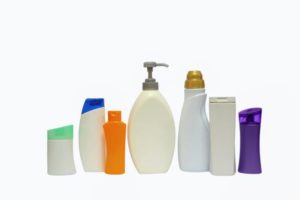 We use so much plastic that we are now surrounded by plastic. But eventually all plastic degrades into tiny pieces called microplastics and nanoplastics. These tiny plastic pieces are found throughout the world, including in the food we eat and water we drink, especially bottled water. A few years ago researchers even found microplastics in the feces of people - meaning they ingested microplastics, which traveled through the intestines, and then eventually excreted.
We use so much plastic that we are now surrounded by plastic. But eventually all plastic degrades into tiny pieces called microplastics and nanoplastics. These tiny plastic pieces are found throughout the world, including in the food we eat and water we drink, especially bottled water. A few years ago researchers even found microplastics in the feces of people - meaning they ingested microplastics, which traveled through the intestines, and then eventually excreted.
But the big question remained: Do some microplastics get absorbed into human tissues?
Two Arizona State University researchers looked into this and found small parts of plastics (plastic monomers) in the tissues of every single person examined. They analyzed 47 human tissue samples (using mass spectrometry) taken from deceased persons who had donated their bodies to science. All had plastic particles in the lungs and adipose (fat) tissue. For example, they found BPA (bisphenol A - an endocrine disruptor) in every single sample. Other examples of plastic particles found were polypropylene and polysterene.
Currently it is unknown if there are health consequences from plastic particles being absorbed into our tissues. However, wildlife and animal research has linked microplastic and nanoplastic exposure to infertility, inflammation, and cancer. Once plastic is absorbed by tissues, it will stay there - it will not biodegrade. Whether there are human health effects is a very important issue because more and more plastic is produced each year, which means exposure to more plastic particles over time, and accumulation in our bodies.
Note that microplastics are plastic fragments less than 5 millimeters in diameter (many can be seen by the human eye), while nanoplastics are even smaller with diameters of less than 0.050 millimeters (these can not be seen by the human eye).
Excerpts from an American Chemical Society press release about research presented to the American Chemical Society in August 2020: Micro- and nanoplastics detectable in human tissues
WASHINGTON, Aug. 17, 2020 — Plastic pollution of land, water and air is a global problem. Even when plastic bags or water bottles break down to the point at which they are no longer an eyesore, tiny fragments can still contaminate the environment. Animals and humans can ingest the particles, with uncertain health consequences. Now, scientists report that they are among the first to examine micro- and nanoplastics in human organs and tissues. ...continue reading "Plastic Particles Detected in Human Lungs and Other Tissues"

 Did you know that many tea bags contain plastic or are made totally from plastic? And that tiny pieces of plastic (microplastics) from these teabags are released into the hot water when brewing tea?
Did you know that many tea bags contain plastic or are made totally from plastic? And that tiny pieces of plastic (microplastics) from these teabags are released into the hot water when brewing tea?